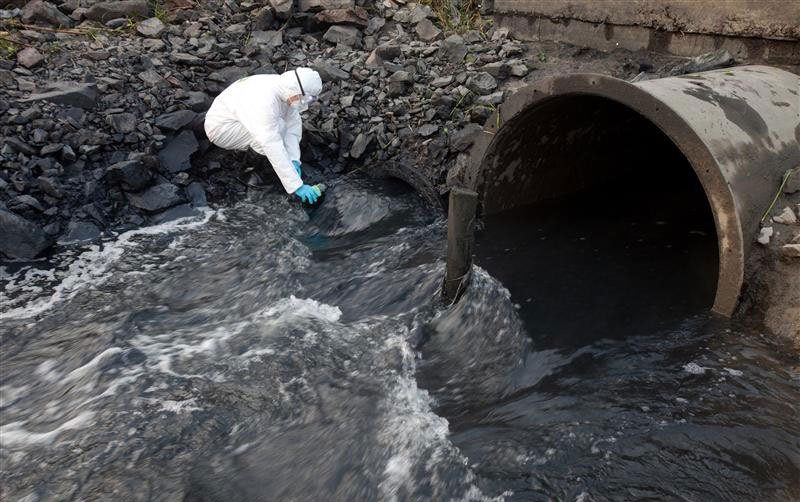The notion that manufacturing and environmental health are at odds with one another has been commonly held since the Environmental movement really got going in the 1960s. Most of the time, this characterization has been true. There really is an environmental trade-off associated with industrial activity—at least in the traditional sense. Among the most damaging of these effects are:
- Huge energy demands — typically met with fossil fuels — associated with fabrication and shipping
- Material waste due to inefficient usage of materials — CNC milling can generate as much as 95% waste
- Air, water, and soil quality impacts when toxic substances associated with production find their way into the area surrounding a factory
- Sub-optimal designs that result in unnecessarily heavy or inefficient products that, in turn, generate waste
The economic advantages of metal additive manufacturing as an alternative to traditional methods are clear, but the reduced environmental impact may be even more important to the future of industry. Each of the four environmental drawbacks of conventional manufacturing listed above has the potential to be mitigated (or even fixed) by 3D printing.
Below, we’ll discuss how metal AM can help address the environmental problems posed by traditional techniques.
Shipping: An Enormous Carbon Footprint
The flow of raw materials into a manufacturing facility and finished goods out of it require enormous energy inputs allocated to shipping. Given that traditional manufacturing has been heavily reliant on fossil fuels since the Industrial Revolution, this process exacts a major toll on the environment. Trucks, trains, ships, and planes burn fuel at a staggering pace. Together, the transportation sector accounts for over 30 percent of all U.S. emissions. Industrial transportation related to shipping undoubtedly comprises a major segment of this total.
The carbon emissions (along with other, potentially even worse pollutants) associated with selling a single consumer product—an iPhone, for instance—are staggering. Complex, disjointed supply chains result in an end-use product that requires inputs to be shipped from hundreds of suppliers. Further, the completed phone goes through multiple layers of distribution before it arrives in its buyer’s hands.
3D printing can’t fix all these problems, but it does have the potential to dramatically cut the number of links in the chain by allowing local, on-demand manufacturing of a huge variety of components. The day is quickly approaching when large domestic manufacturers don’t have to source parts from highly specialized facilities abroad. While global supply chains are unlikely to ever vanish entirely, each component of a product that can be produced on-site goes a long way to reducing the product’s carbon footprint. Without a doubt, 3D printing will eliminate millions of component shipping journeys in the coming decade.
Traditional Processes Waste Vital Resources
The largest segment of the metal parts fabrication industry is “subtractive” processes like CNC milling, in which material is cut away from a block to produce a final part. This is akin to Michelangelo carving David from a block of marble.
This brings us back to the key word, “subtractive.” The problem with this type of manufacturing is that any of the original block of metal that is cut away is waste. That wasted material represents additional resources that must be extracted from the Earth via potentially harmful mining practices.
Even worse, the final outcome for the scrap material itself involves one of two things:
- Additional shipping and processing to take advantage of whatever economic value the cast-off still has
- A trip to the local landfill, where industrial overcrowding is already a significant issue
Metal 3D printing, when economically viable, provides a nearly perfect solution to this problem. Because it’s an additive process, whereby material is layered onto itself in an exact pattern, there is virtually no waste associated. Only the metal that actually comprises the final component is used. The unused material can be recycled.
This could mean the difference between 95% waste with CNC machining and < 1% waste using metal AM.
Toxic Byproducts are Common in Metal Manufacturing
Pollution takes many forms. Carbon emissions deservedly get much of the attention from environmentalists, but other types of pollution can wreak just as much havoc in a local area. Certain types of metal manufacturing, most notably CNC machining and metal injection molding, require the use of toxic substances as part of their process. The oils and lubricants needed to ensure CNC machines run properly are often dangerous to the environment. The finishing process for these parts can also make use of fluids that can be damaging if handled incorrectly. Similarly, metal injection molding uses a catalytic de-binding process that requires hazardous products that are very harmful to the environment. These must be handled carefully and disposed of properly.
Needless to say, “properly” isn’t a standard to which all manufacturers worldwide are held. Some percentage of the harmful agents used in both CNC machining and metal injection molding will make it into the air, water, or soil that supports the community around a plant. It’s hard to quantify this, but the environmental impact is real.
Standards for proper disposal of hazardous chemicals associated with conventional metal manufacturing can vary dramatically by world region.
Metal AM eliminates this concern entirely. The process simply doesn’t generate any toxic byproducts, which guarantees that air and water quality won’t be directly harmed.
Conventionally made components can leave a much bigger carbon footprint than 3D printed parts.
A less obvious environmental cost of traditional manufacturing lies in the efficiency of end-use products. Recent successes in metal 3D printing have changed what’s possible for fuel efficiency in a variety of places. The technology has enabled huge design improvements that shave off weight without compromising strength. That is a recipe for fuel savings in everything from jet engines to car chassis.
While it may seem a bit unfair to compare 3D printed parts to those produced using techniques that have been around for hundreds of years, these parts are the new standard. Vehicles that don’t incorporate 3D-printing-enabled design to gain efficiencies are an environmental downgrade from what is possible in 2018. While many factors, including the types of materials used and the internal detailing made possible by 3D printing, converge to result in efficiency improvements, the biggest leaps have come in one area: parts consolidation.
Lessening the Carbon Footprint Through AM-Enabled Design
3D printing allows for the manufacture of parts with complex internal geometries, often in ways that are impossible for conventional techniques to match. The upshot is that design changes that combine multiple parts into a single component can often be completed without sacrificing functionality–or feasibility. This accomplishes the goal of lowering cost and lead times by simplifying the manufacturing process, but it also comes with significant environmental advantages.
To date, the most impressive example of this type of part consolidation comes from General Electric, perhaps the world’s most impactful industrial practitioner of metal AM. Last year, the company began testing its new Advanced Turboprop aircraft engines after more than 3 years of development. The engines, which are scheduled to make their maiden commercial flights later this year, are remarkable for their weight, fuel consumption, and power, all of which are categories in which they outperform their competitors–and predecessors. The key to this remarkable set of characteristics lies in the Advanced Turboprop’s simplicity. The design team at GE assigned to the development of these remarkable engines got serious about parts reduction through 3D printing. The rest, as they say, is history.
With the Advanced Turboprop, GE took a design that originally called for 855 engine components and stripped it down to 12 clean, beautiful parts that retain all the functionality—and more—of older models. The changes made significant cuts to both weight and cost of production. The more important savings, however, could trim emissions dramatically. The company estimates that the new engines deliver 10 percent more power and cut fuel usage by 20 percent. The implications of such a reduction are amplified by GE’s scale: the company’s technology already powers a huge proportion of all aviation. The more the Advanced Turboprop comes to be integrated in the company’s overall product mix, the greater the returns will be in terms of emissions saved. All of this was made possible by parts consolidation through metal 3D printing.
Additive Manufacturing Optimizes Designs & Efficiency
As the world marches toward an increasingly tenuous climate future, the costs of a suboptimal part made through traditional manufacturing must be considered right alongside the more tangible impacts described above. There are countless heavy or less-than-aerodynamic components in applications across every sector that could be improved significantly with the design freedom afforded by metal AM. In aggregate, the emissions reductions that are now feasible through projects like GE’s Advanced Turboprop engine would represent major improvement for humanity’s overall carbon footprint. Metal 3D printing doesn’t yet offer all the answers, but in a growing percentage of manufacturing situations, it’s a step in the right direction for our planet.



